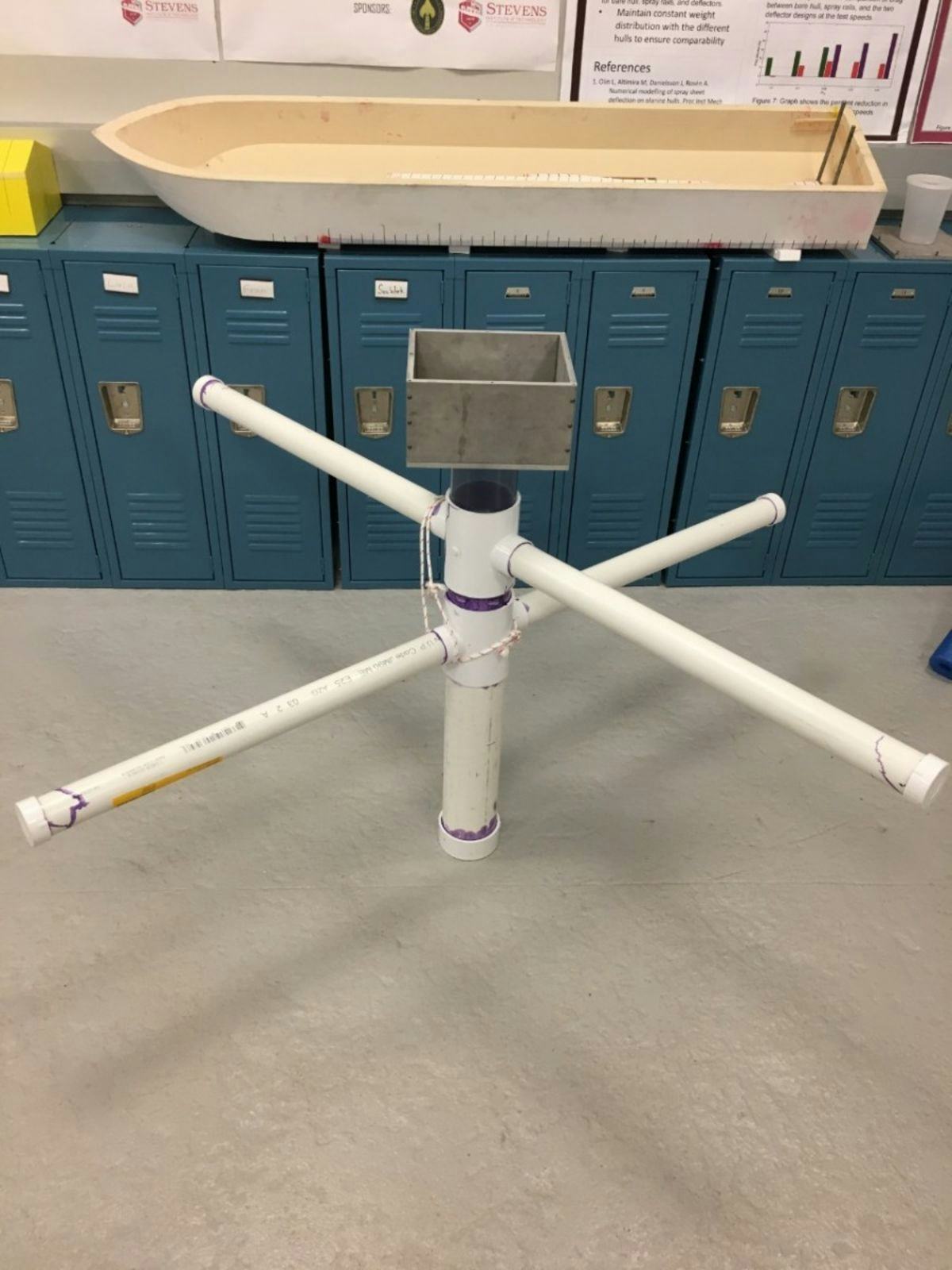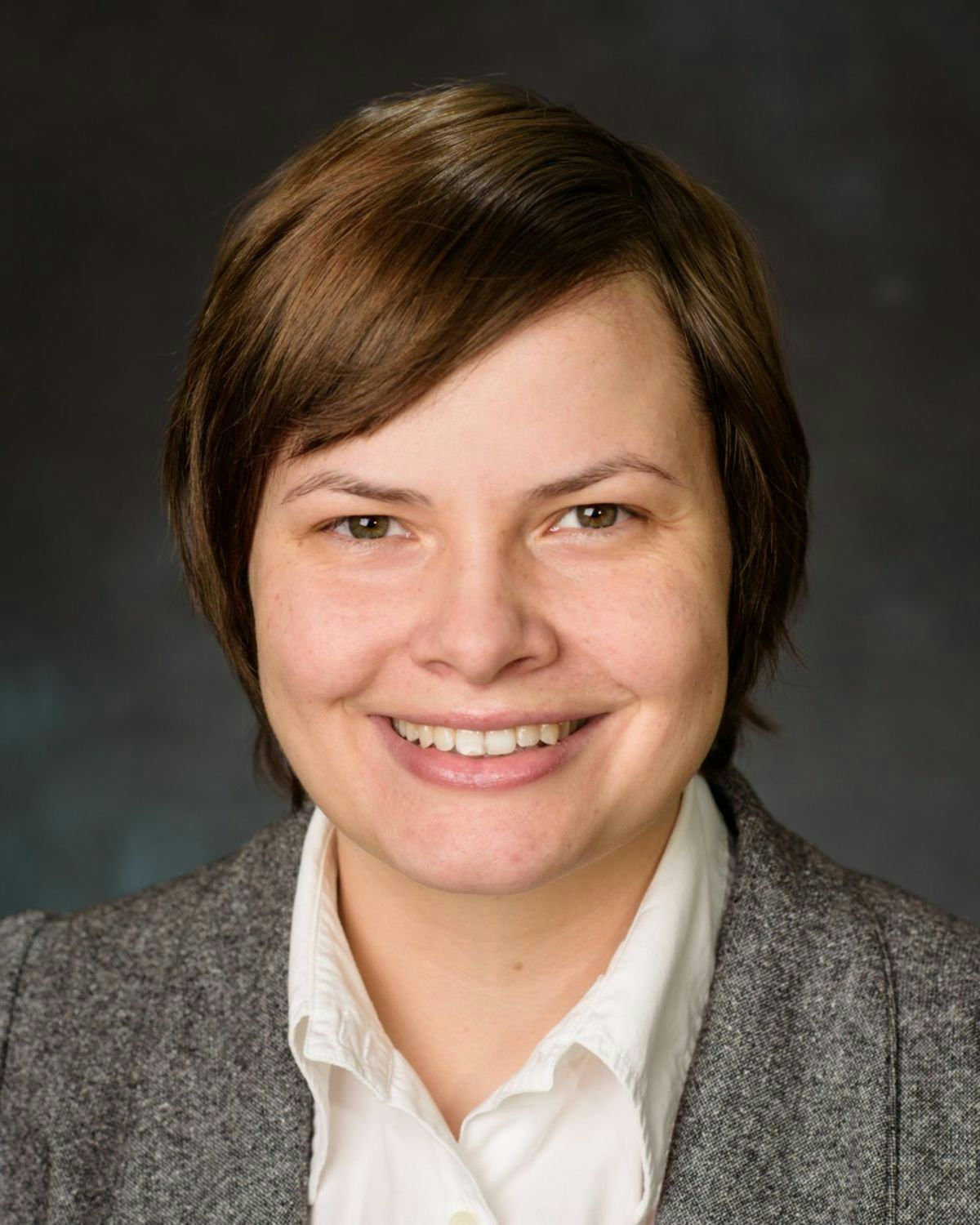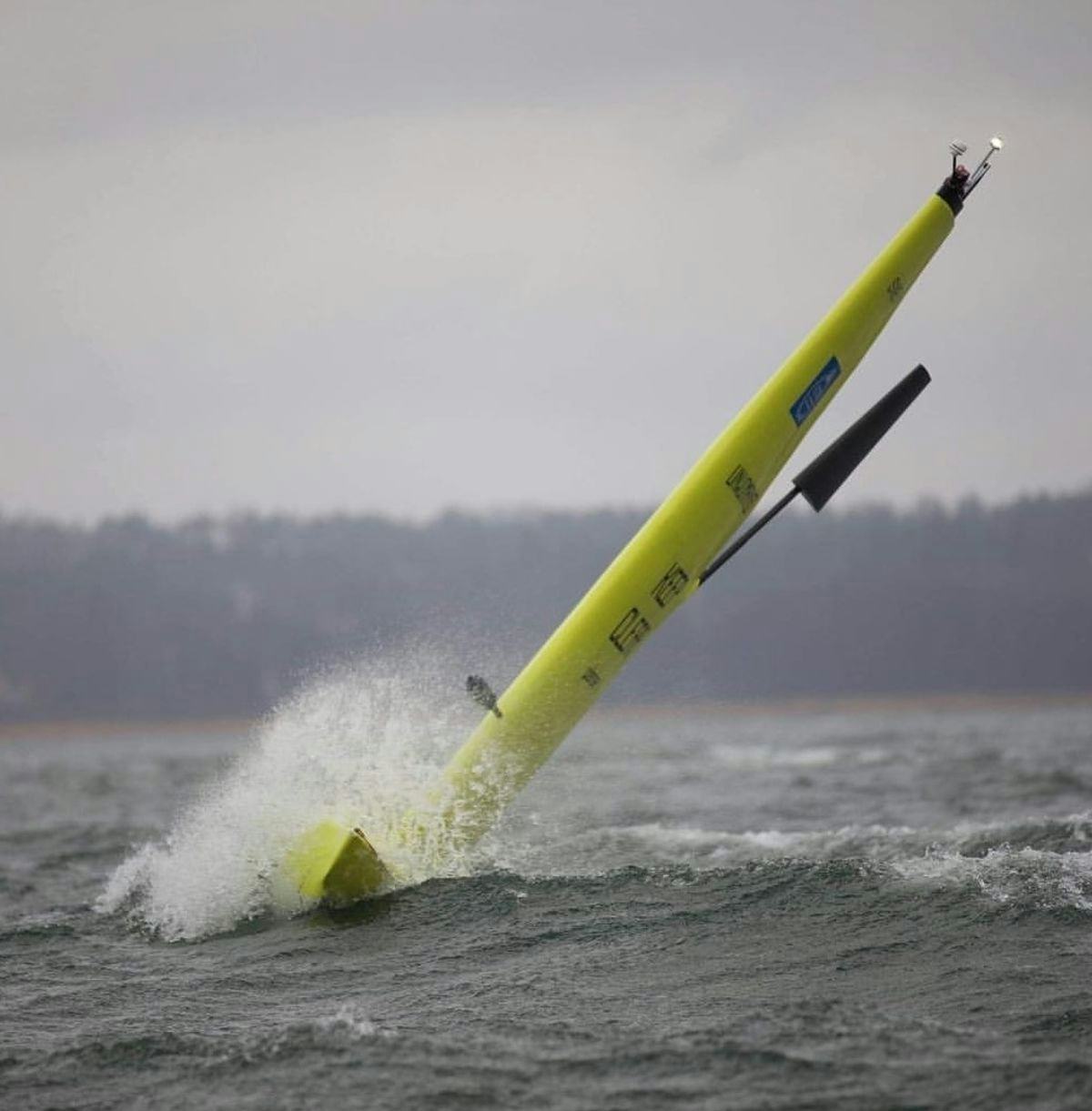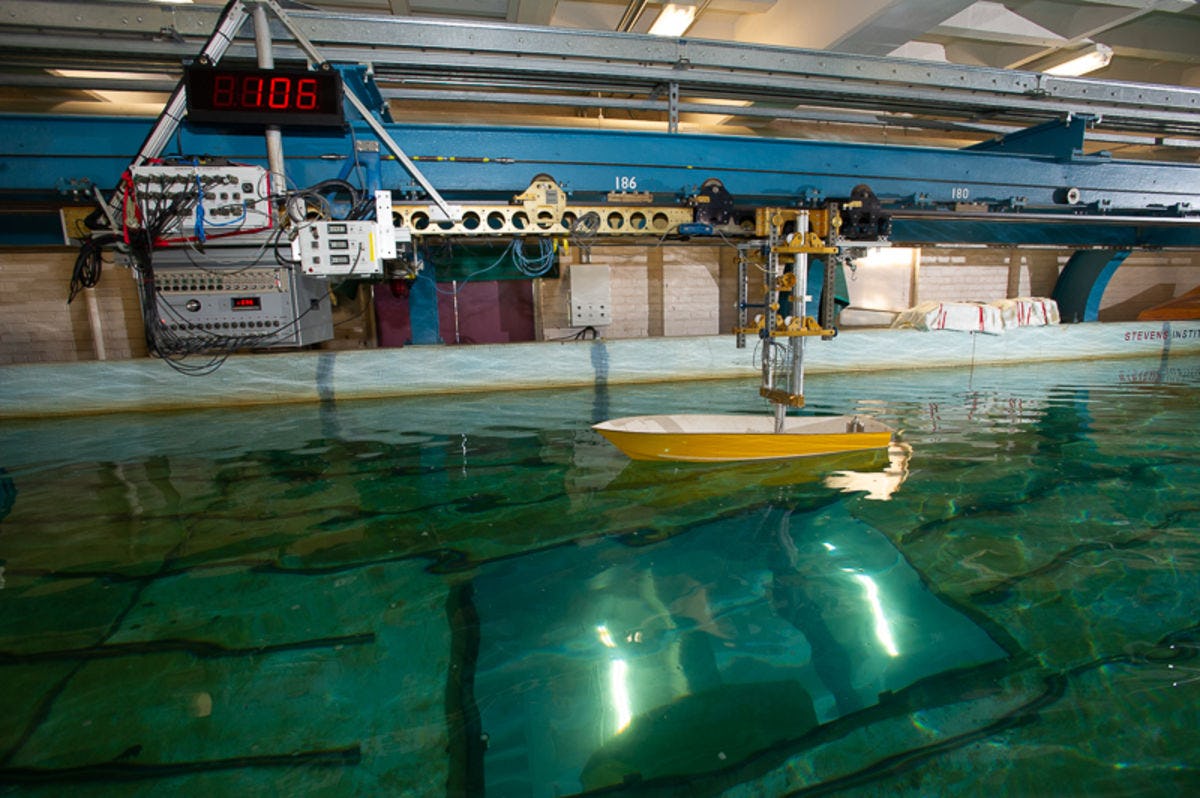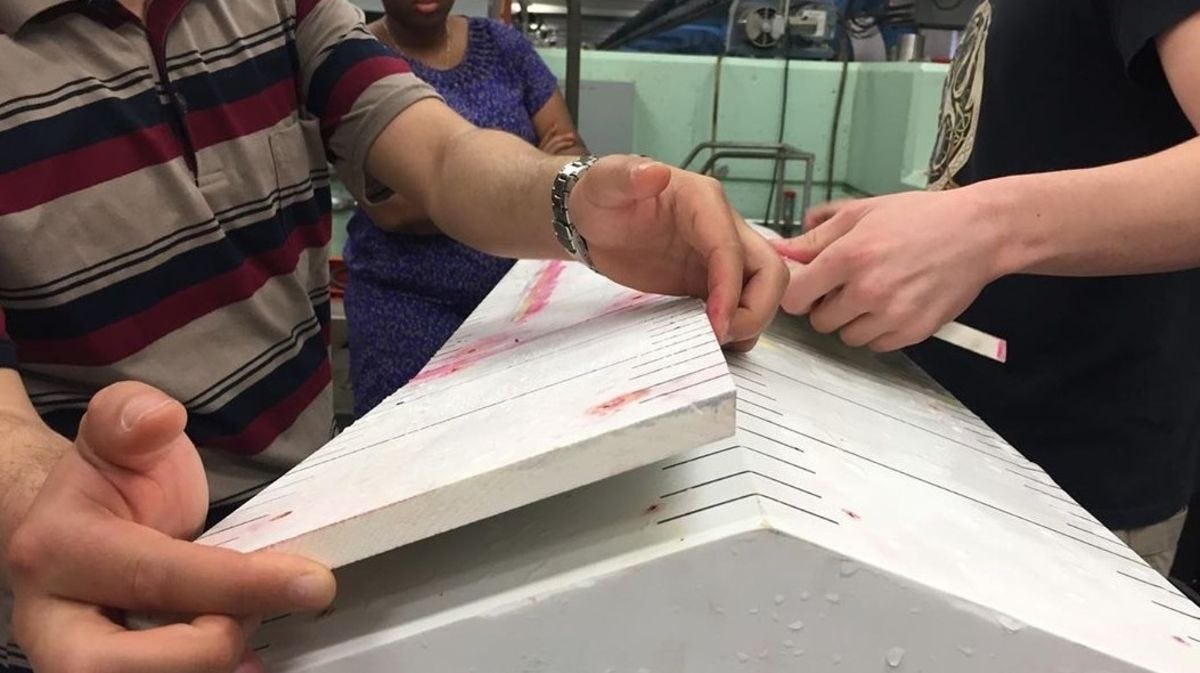Shaping New Ways to Feed the World, Detect Climate Change, Monitor Energy Facilities
Stevens researcher blends architecture and machine learning to design new marine systems and crafts for the next generation
Some 800 million people — one in every ten of the world's citizens — do not have enough daily food to eat, according to the United Nations' latest global hunger report. The vast majority live in developing nations, and the situation is actually worsening in Africa and South America due to globally warming temperatures. It's a huge humanitarian challenge.
"But what if food could be efficiently grown in the ocean?" asks Stevens Institute of Technology engineering professor Mirjam Furth.
Monitoring climate change is another pressing issue. Sailing ships to the polar regions to take water temperatures and other oceanographic readings is an expensive, comprehensive undertaking.
However, sailing drones to those remote areas may be far safer, more manageable and cost-efficient — if the crafts are designed properly.
"The thing that actually ties many of the big problems together is fluid dynamics: how things move in water, how they operate there," explains Furth. "I'm not a farmer or a climate scientist, I don't have that expertise.
"But I am an expert on floating structures and I can contribute, in my way, to help feed the next generations of the ever-growing world population; build autonomous sea sensors; and make ships or flotation devices safer."
Taking the ocean's pulse, growing food in the seas
Growing up in Sweden, Furth's family sailed often. She soon became interested in boat and ship design, pursuing multiple degrees in naval engineering in her home country and abroad.
She also found innovative ways to bring her knowledge of hydrodynamics to bear on some of the pressing global challenges of our time, including overpopulation, global warming and ocean health. The chance to work on big issues like these brought her to England, Japan and finally the U.S.
"It's interesting that I came here, because one of the most innovative advances in all of hull design was created by a man named Daniel Savitsky, a longtime Stevens professor (and still an emeritus member of the department)," she notes. "In my world, he's very famous, a rock star."
In one effort, in collaboration with England's Southampton University, her team is designing an aquaculture seaweed farm for deep-water operations.
"Deep ocean farming is more resilient to both natural disasters and climate change than conventional farming," says Furth.
"The key is, the object must ride the waves well," Furth says. "Think of a ping-pong ball. It bobs on the waves perfectly, without being damaged. Something of a different shape will not do this; there will be a combination of bobbing and moving."
"This is a novel shape whose hydrodynamic properties are still unknown. Now we want to find out how the shape we are designing moves in the waves, so that we can further optimize that structure."
In another effort, working with Sweden's prestigious KTH Royal Institute of Technology, Furth's team helps improve an autonomous sea drone that can ply the deep seas safely and take sophisticated readings of weather, water and marine life.
"There are places where it's very expensive for people to go, or difficult, or both," says Furth. "In these cases, autonomous ocean vehicles may be the best solution. You want a drone that can travel to a remote place, take readings, and then return to you. You also want it to be cost-efficient, because occasionally a craft will fail to return."
The drone — a sail-shaped, solar-powered, unmanned ocean robot designed at the Swedish university — could also serve as a host craft to deploy and gather payloads of smaller sensors in the ocean environment, she adds.
"We plan to use machine learning in this project, as well, in order to create a moving weather station, but this is in its initial stages so we can’t divulge more at this stage" notes Furth.
Safer ships, cleaner oceans, faster boats
For another project, a team led by visiting KTH master's student Luca Castaldi investigates designs for spray-deflecting strips that can be attached to watercraft, potentially boosting both speed and fuel efficiency. The project leverages the Davidson Laboratory's famed towing 100-meter-long towing tank, one of the longest and quickest in the U.S.
Jack Bonoli, a Stevens sophomore naval engineering major from Massachusetts assisting in Castaldi's research, presses a button and sends a weighted, planed-hull craft zipping through the tank at a healthy 20 miles per hour — sending big fans of water spraying ahead and to either side of the craft as it speeds past. Live video cameras capture the run for playback.
"We're trying to direct the spray from the hull backward, rather than forward, to give the craft an extra push," explains Bonoli. "Today's craft, which lacks any deflector strips, is sending it forward, which is a hindrance."
"Research can be tedious, or it can be fun," adds Castaldi. "You have to be a patient person to enjoy this, which I am. So, for me, it's both fascinating and fun."
In still another set of investigations, Furth and her students are attempting to devise a new type of hull sensor that can detect tiny cracks in ships before they become catastrophic ones.
"Ships sink more often than you think, except that it doesn't make the news," she notes. "Most of these occur due to structural failures that were not detected in time. You can't inspect every inch of a large ship every day."
Her team has built an intriguing experiment that produces a series of continual vibrations within a simulated ship hull. Then a crack is introduced, and a sophisticated array of sensors watches and listens for changes in those vibrations.
"The vibrations or progression of vibrations may change, if there are even small cracks suddenly introduced," she says. "That's our theory, anyway. If we can show this to be true for small cracks, we will then move up to larger cracks. We will see."
Graduate and undergraduate students and student teams under Furth's watch also investigate other problems in marine engineering as diverse as novel designs for huge floating oil platforms — "giant containers of liquid, floating on more liquid," Furth notes — or personal flotation vests.
"We have a lot going on," she says. "And I could not do all this by myself. Fortunately, I have plenty of great students helping me: Ph.D. students, undergraduate students, Stevens Pinnacle Scholars, Innovation & Entrepreneurship summer scholars, and several students visiting from other universities as they complete their master's theses.
"I feel very fortunate to be here at Stevens now. We have an incredible marine legacy, a world-class facility and some of the best students around."

